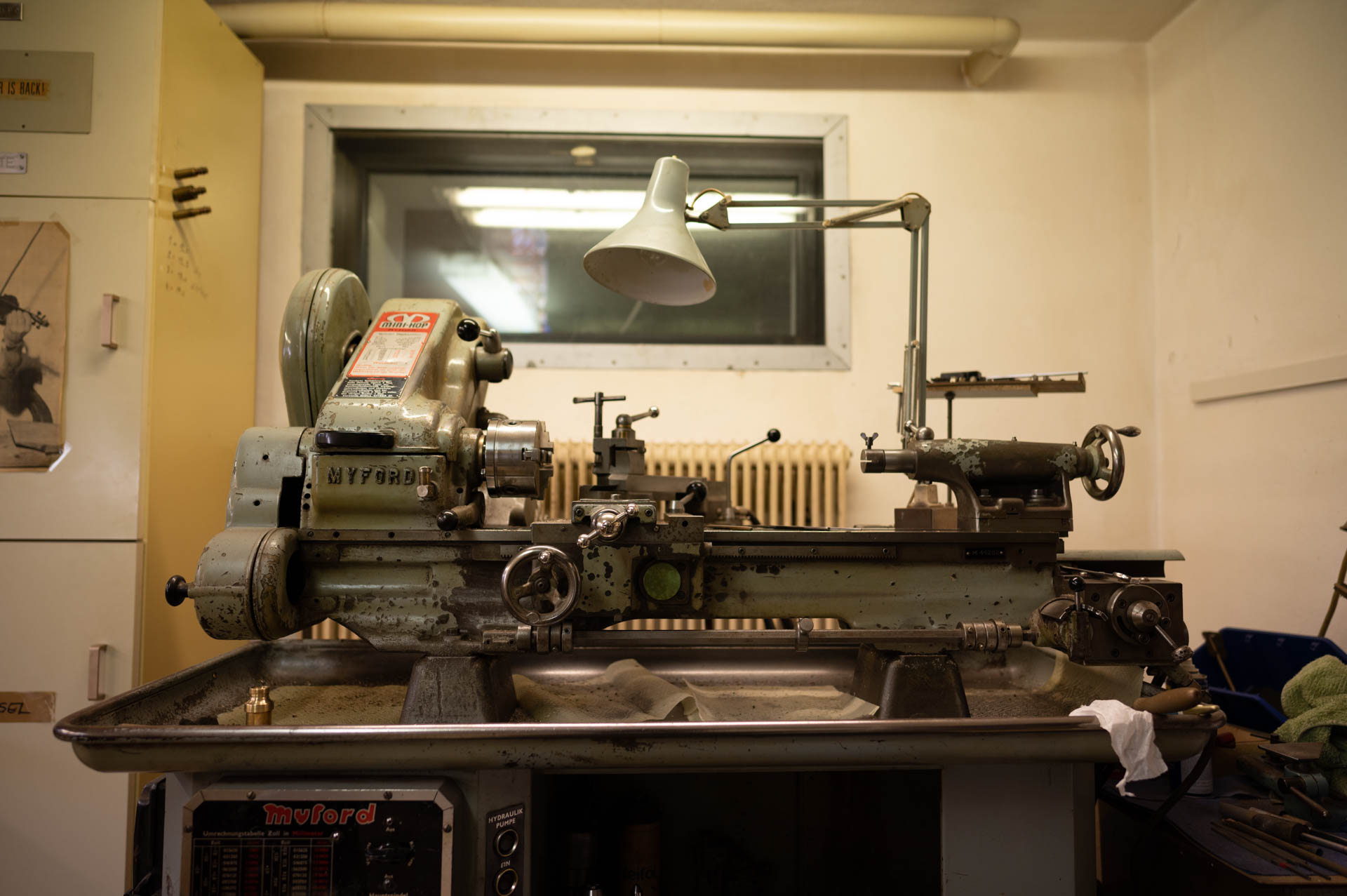The production of mouthpieces was started by my father Karl Breslmair in 1968 by a coincidence worth telling. The Vienna Philharmonic Orchestra had an old trumpet mouthpiece in its collection, which had been made in a Viennese master workshop. The first trumpeters of the Vienna Philharmonic at that time, Professors Josef Levora and Helmut Wobisch, shared this mouthpiece, which was outstandingly easy to play and had an ideal sound.
Prof. Wobisch was friends with Wolfgang Higatsberger, professor at the Vienna University of Technology and director of the Seibersdorf Atomic Research Centre, whom he told one day about this mouthpiece. Wherever the Vienna Philharmonic toured, they tried to find instrument makers who could reproduce this unique mouthpiece. But no one was able to copy this old unique piece. Higatsberger said that he could help him, since almost anything was possible in Seibersdorf.
Perhaps at that moment he was already thinking of my father, who was appreciated by all researchers as an ingenious technician. He always found solutions in situations that seemed technically hopeless; he knew how to help physicists, chemists and biologists unbureaucratically. In personal conversations, he recognised problems immediately and usually had patent solutions at the ready. As a co-founder of the Werkorchester, violinist and violin maker (a hobby since early youth), he was the man for Higatsberger who would also know what to do with mouthpieces. Until then, brass music was frowned upon in the Breslmair house. Violin music was our passion. The name Vienna Philharmonic, however, made my father sit up and take notice. It was a special, honourable task that appealed to him. He was to make mouthpieces for what were probably the best musicians of the time.
No one could copy this inconspicuous thing, produce an equivalent. Now it was up to my father, who was completely gripped by this order. As a 14-year-old, I was also peripherally involved in the work of my father and his team as an intern. I had to interpolate endless columns of numbers and draw coordinate points on graph paper. Months later, the first mouthpieces could be made. My father took these prototypes to the "Bühnentürl" of the Vienna State Opera and handed them in as instructed. All of them bore the designation G1, as the first usable prototype series after the gold-plated (G), old, nameless original.
Within a few weeks, the mouthpieces were distributed among a few top musicians. My father had indeed succeeded in developing a mouthpiece that could meet the highest demands. The knowledge of the shapes of the cups and dimensions of the bores could also be transferred to other brass instruments. From then on, Breslmair's "Seibersdorf" mouthpieces set the tone and are still an integral part of the Viennese classical music scene today.

 No products in the shopping cart.
No products in the shopping cart.